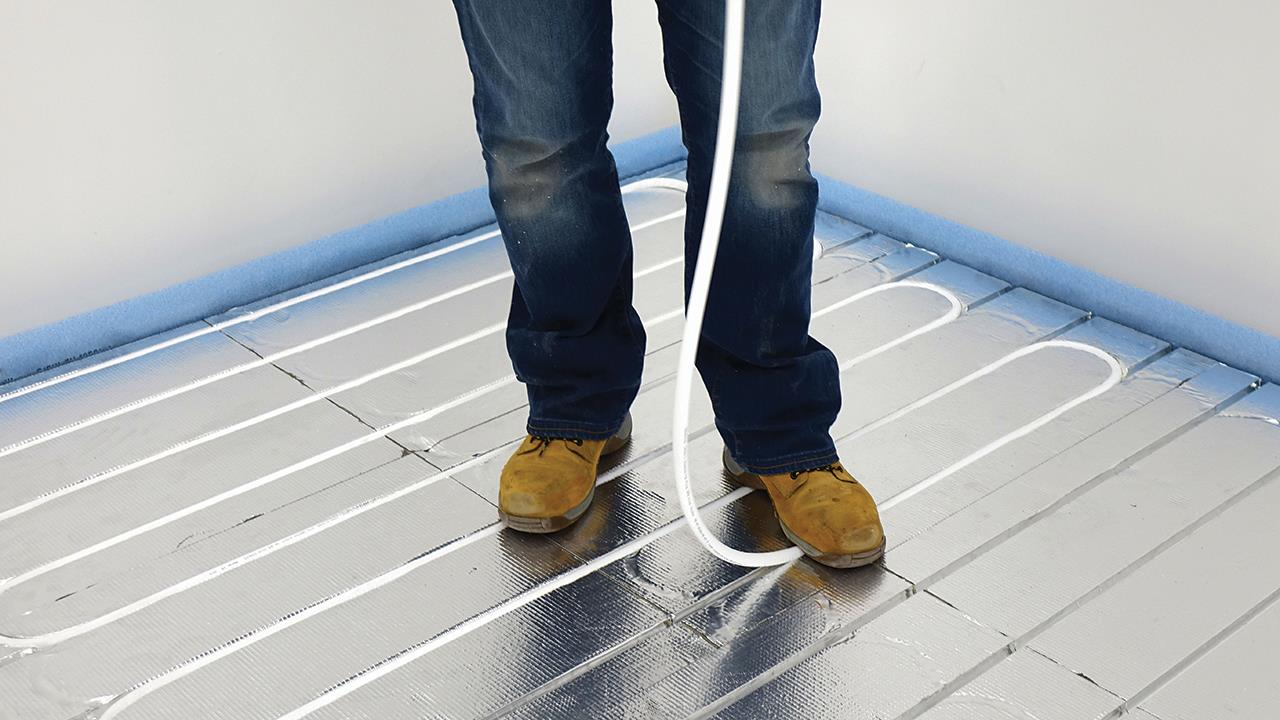

UFH is now a popular way to provide a comfortable level of heating in a home.
In the past, UFH was associated with causing disruption for the homeowner, and while it is true that some UFH systems are best installed during renovation or even the construction phase, there are ways to retrofit underfloor heating without creating significant disruption to a property’s existing layout. One such solution is an overlay system, which is easy to install and straightforward to connect to the heat source.
The advances in technology and installation methods have made it easier to install underfloor heating systems in existing homes with minimal disruption. The even heat distribution, improved energy efficiency, design flexibility, and compatibility with various floor coverings make underfloor heating an attractive option for homeowners seeking to upgrade their heating systems.
For example, the Grant Uflex and Uflex MINI Overlay System is a dry system that does not require wet screed poured over pipework. Instead, installers can fit the robust, high density polystyrene boards on top of an existing, suitable floor surface, lay the pipe into place, and then fit the new floor covering directly on top.
One of the key benefits of retrofitting underfloor heating is the even and consistent heat distribution it provides in comparison to some traditional heating systems, such as standard radiators. These tend to create temperature variations within a room, but with underfloor heating, the heat is evenly distributed from the floor upwards, resulting in a more comfortable living environment.
This consistent heat distribution also eliminates cold spots and drafts, creating a cosy atmosphere throughout the space.
A further advantage of retrofitting underfloor heating is improved energy efficiency. With heat radiating from the entire floor surface area and warming up the surrounding objects and surfaces, including furniture and walls, the entire room is heated evenly and, provided the system has been designed correctly, the UFH will aid the heat source to perform more efficiently. This enhanced energy efficiency can lead to lower heating bills and a reduced carbon footprint.
Additionally, retrofitting underfloor heating offers design flexibility for the end-user. By eliminating the need for bulky radiators or vents, homeowners gain more freedom in terms of furniture placement and room layout. With underfloor heating, homeowners can make the most of their wall space, enhance the aesthetics of their home, and create a cleaner and more streamlined interior design.
Underfloor heating is also compatible with many kinds of heat sources including boilers, heat pumps, and other technologies. UFH is increasingly being installed as heat pumps rise in popularity in both the newbuild and retrofit sectors. With traditional screeded systems, low profile systems, and overlay board systems available, there is an UFH solution to suit almost any customer’s needs, making it a versatile heat emitter in today’s market.
It’s worth remembering that with any UFH installation, you have to carefully design the heating system. This includes considering the size and layout of the room, the type of flooring that will be installed, and the heat source that will be used.
During the design phase, you should make sure you properly calculate the required heat output needed to fulfil the property’s demands, thoroughly assess the heat loss from the home, and choose the right type of underfloor heating system.
For instance, where is the UFH going to be used? What fixings or pipework will be sited around it, such as toilets and other services? Where will the UFH manifolds be situated?
To help answer these questions, many manufacturers, including Grant UK, now offer a design service to help installers with the specification of their underfloor heating installation projects.
There is plenty of training available to heating engineers on UFH products, often free of charge. You can access Grant UK’s course, for example, via its eLearning Academy. The course is approximately 20 minutes in duration and has been developed to help installers further their knowledge, covering core components and accessories within the Uflex range, as well as covering the controls and wiring centres. A brief summary of the design and support services are also included.
If you'd like to keep up-to-date with the latest developments in the heating and plumbing industry, why not subscribe to our weekly newsletters? Just click the button below and you can ensure all the latest industry news and new product information lands in your inbox every week.